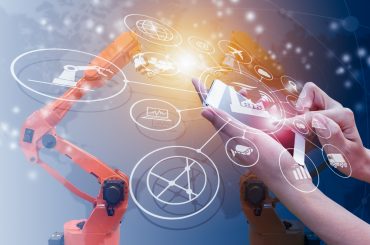
Enterprises have had a clear line of sight from technology modernization to tangible business value. When the pandemic broke, modernization went from being important to absolutely imperative.
The terms “technology modernization” and “digital transformation” are used so loosely that it’s easy to confuse the two. For the record, modernization refers to upgrading technology or replacing it altogether with something new. Digital transformation is much broader; its definition can vary, but by and large, it is about integrating digital technology within a business to change the way it works or creates value for customers; importantly, digital transformation calls for changes in culture and status quo.
While modernization is not the same as transformation, it is definitely the engine that powers it. If there was any doubt about this before Covid-19, now there is none; in fact, in the post-pandemic world, modernization’s influence is being felt way beyond its technological aspects.
See also: Importance of Application Modernization for Business
Modernization is leading to value beyond business
For some years now, enterprises have had a clear line of sight from technology modernization to tangible business value. For example, in an April 2020 global survey on business and IT, a leading analyst found that in the previous 24 months, nearly 60 percent of respondent companies had seen at least a moderate impact of technology transformation on building new revenue streams, while about 75 percent had saved costs (~30 percent reported significant savings). Programs leveraging advanced technologies, such as the Internet of Things and edge computing, saved even more costs for their enterprises (44 percent registered significant cost reduction).
But when the pandemic broke, modernization went from being important to absolutely imperative. One survey found that 80 percent of enterprises accelerated their digital transformation programs, and 89 percent said that the pandemic underscored the need for more agile and scalable technology.
The need for speed, flexibility, and innovation is perhaps even higher in the public service domain. For as long as the pandemic remains and, in the years thereafter, governments will need powerful, agile systems to manage public health initiatives, repeated vaccination drives, and programs offering financial support to individuals and businesses. Modernization of government technology systems will be essential to that agenda.
See also: FinServ App Modernization Essential to Counter New Players
Digitization is sustaining supply chains
Supply chains suffered hugely during and after the pandemic as global transport and logistical systems experienced unprecedented disruption. It was estimated that global transit times increased by a whopping 25 percent.
Switching to remote working was also a significant challenge for supply chain professionals. Research findings are roughly split down the middle on how well enterprises managed to cope. In one study, which was more optimistic about the outcome, the respondents who managed to plan supply chain activities well despite working from home could do so because their organizations had invested in modern digital solutions, advanced analytics, in particular.
With digitization clearly linked to supply chain performance, enterprises across the board have ramped up investment in digital supply chain tools. There is an upward trend in the adoption of even highly advanced technologies, such as 3D printing (think medical equipment companies) and augmented reality, in manufacturing and distribution operations. Logistics operations will continue to automate quickly so they can withstand future risks.
Digital technology sustained remote lives and livelihoods
By far, the biggest value of modern technology post-pandemic was that it allowed life and work to go on, albeit from a distance. While an increasingly distributed workforce had been on the cards for some time, especially in high-technology domains, no one was prepared for it to happen overnight. But once the employees had the tools and technology they needed to work from home, they transitioned quickly and productively.
It is accepted that a hybrid work model is here to stay. And it will fuel other trends, such as the creation of an extended enterprise on a modernized technology foundation, where a digital platform will enable remote support and customer service, cloud will host massive enterprise workloads, and digital productivity tools will support online learning and collaboration, and the latest AI-enabled security tools will protect them all.
This will provide a great opportunity for completing the digital transformation of enterprises by making the other changes that are required – for example, in culture, mindset, change management, digital literacy, and innovation approach. It goes without saying that these changes – and digital transformation outcomes – must be driven from the top.






























